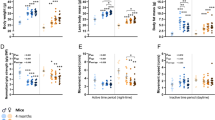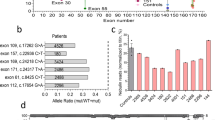Abstract
Abnormalities in proliferation and differentiation of the dystrophin-deficient muscle are a controversial aspect of the pathogenesis of Duchenne muscular dystrophy (DMD). Analyses of molecules involved in cell cycle modulation do not exist in this context. Cells withdrawn from the cell cycle permanently express p21. The fact that p21, in contrast to other cell cycle proteins, is not diminished when myotubes are reexposed to growth media, allocates this cyclin-dependent kinase inhibitor a special function. Here we report for the first time statistically increased p21 mRNA levels in dystrophin-deficient muscle tissue. Only 42% of conventional RT-PCRs from six muscle samples of human controls yielded positive results but almost all skeletal muscle biopsy samples (87%) from DMD patients (n=5). For p21 mRNA quantification in murine muscle samples we were able to use the exact real-time TaqMan PCR method due to generally higher p21 mRNA levels than in human muscles. In addition, contamination with fibroblasts can be excluded for the murine samples because they do not demonstrate fibrosis at the age of 350 days but start to lose their regenerative capacity. In accord with the results in humans, we observed p21 mRNA levels in mdx mice that were approx. four times as high as those in control mice. Elevated p21 mRNA level may indicate a shift in cell composition towards differentiated p21 expressing cells as a result of an exhausted pool of undifferentiated, non-p21-expressing satellite cells due to previous cycles of de- and regeneration. Alternatively, dystrophin-deficient cells per se may express higher p21 levels for unknown reasons. Although we cannot distinguish between these possibilities, the eventual transfection of a patient's own satellite cells with p21 antisense oligonucleotides may enable the dystrophic process to be influenced.
Similar content being viewed by others
Author information
Authors and Affiliations
Additional information
Electronic Publication
Rights and permissions
About this article
Cite this article
Endesfelder, S., Krahn, A., Kreuzer, KA. et al. Elevated p21 mRNA level in skeletal muscle of DMD patients and mdx mice indicates either an exhausted satellite cell pool or a higher p21 expression in dystrophin-deficient cells per se. J Mol Med 78, 569–574 (2000). https://doi.org/10.1007/s001090000153
Received:
Accepted:
Published:
Issue Date:
DOI: https://doi.org/10.1007/s001090000153




